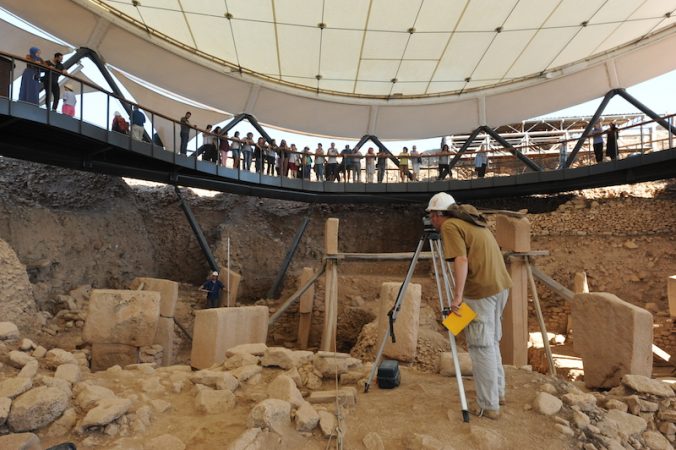In 2016 construction work commenced on two permanent shelters at Göbekli Tepe. These structures will provide additional protection from the elements (wind, sun and rain) to archaeological features in excavation areas in the south-eastern and north-western parts of the site. Fieldwork in spring and autumn of this year concentrated on the documentation of prehistoric architecture in areas affected by building activities. Additional time was spent in the site find-depots, including sorting and inventory work of stored archaeological materials. These measures were essential in preparation for pending analyses and studies taking place in the frame of the recently initiated research phase.
In the course of our excavations at one of the positions assigned to shelter support constructions in the so-called main excavation area in the south-eastern hollow, work was concentrated on the previously unexcavated part of a rectangular stone structure (‘Room 38’ in trench L9-56) of the type commonly assigned to Layer 2 (attributed to the Pre-Pottery Neolithic B period).

Plan of the western parts of the ‘southeast hollow’ (main excavation area). The location of ‘Room 38’ in trench L9-56 is marked with a black frame.
In the northwest quarter of the room fill deposits were left untouched in order to provide additional support for the T-pillar (PXIII) located (still in-situ) at a central position at the western end of the room. The base of this T-pillar was found to be embedded in a raised platform at the western end of the building. In the northeast corner of the room a stone feature was revealed. This feature is comprised of three low (c. 50 cm high) walls (to the north, east and west). Two of the walls (to the north and east) are constructed of limestone blocks and were built up against the main walls of the room. The southern wall of the feature is made of a large worked limestone slab, perhaps a fragment of a T-pillar or similar object. The feature is open to the west. A lack of evidence for burning would speak against its function as an oven. Excavations within the building yielded numerous finds, including chipped stone and animal bone remains. A large stone vessel was found in-situ on the floor of the building.

Reblogged this on tabletkitabesi.
Very nice to follow Your Job in the site particularly for the small elements that increment the knowledge of the envelops.
I am always waiting these type of reports.
Franco
You’re very welcome!